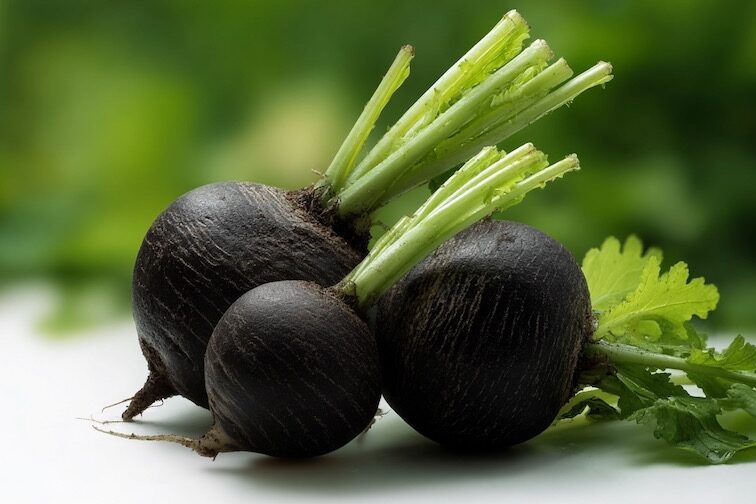With the support of our stable Hungarian producer base, this vegetable is always available in high quality in our wholesale assortment – ask us for an offer!
What do you need to know about the daikon?
Daikon, also known as white radish, belongs to the cruciferous family and is a species of radish. It is named for its elongated, cylindrical shape and its white colour, which resembles an icicle. Originally from Asia, it is now a common and popular vegetable in many parts of Europe.
Its health benefits include being low in calories but rich in fibre, vitamin C, folic acid and potassium. These ingredients support the immune system, aid digestion and contribute to cardiovascular health. Its antioxidant content can also help protect cells and reduce inflammation.
Specificities of its cultivation
Daikons can be grown in many European countries, especially in temperate regions. The main growing season is spring and autumn, as radishes prefer cooler weather. It is grown outdoors but can also be grown in greenhouses to extend the season.
Large quantities are grown in France, Germany and the Netherlands. It is also becoming increasingly popular in Hungary and is also grown by local producers. In spring and autumn you can find fresh, local ice-cream on the shelves, while in the summer months you can buy imported products.
How to choose a good quality daikon?
When buying, you should consider the following points:
- Colour: The fresh daikons have a bright white rind, free from spots and discolouration.
- Texture: the radish should be firm to the touch and flexible. Soft or wrinkled specimens are no longer fresh.
- Leaves: if the leaves are still attached to the radishes, they should be green and fresh, as this also indicates the freshness of the vegetable.
How do we use the daikon in the kitchen?
Daikon is a versatile vegetable that can be eaten raw or cooked. Some ideas for use in the kitchen:
- In salads: thinly sliced or grated, it adds freshness and crunch to salads.
- In sandwiches: cut into rings, it can be a delicious addition to sandwiches, especially when paired with cheese and meat.
- As a pickle: Pickled in vinegar, it makes a piquant pickle that goes well with a variety of dishes.
- In soups: chopped into small pieces, it can be added to soups, where its slightly spicy flavour adds a special aroma.
- Roasted or baked: sliced and pan-fried or baked in the oven, they make a delicious side dish.
How to store after purchase?
Store daikon in a cool, dark place, such as the vegetable compartment of a refrigerator. The leaves should be removed as they can draw moisture away from the root, keeping the radish fresh for longer. Wrapped in an airtight bag or a damp tea towel, it will keep fresh for up to a week.
Interesting facts about the daikon
- Daikons were known in ancient Egypt, where they were part of the diet of pyramid builders.
- The pungent taste of daikon is caused by the mustard oil glycosides they contain, which are also believed to have antibacterial properties.
- In Japan, daikon, is often eaten steamed or pickled and is an important part of traditional cuisine.
Tips for using daikon in the kitchen
- Radish tzatziki: Make a refreshing, special tzatziki by mixing grated daikon in Greek yoghurt, seasoned with garlic, dill, salt and a little lemon juice.
- Crispy crisps: cut the daikon into thin slices, then bake them on baking paper, drizzle with a little olive oil and season with spices until crispy.
- A refreshing radish smoothie: Make a vitamin-packed breakfast drink by blending daikon, apple, carrot and a squeeze of lemon juice.
- Cream of rete: Mix grated daikon with cream cheese or cottage cheese, add fresh herbs and spread on bread.
- Grilled radish: Cut the daikon in half lengthwise and grill it lightly, then sprinkle with salt and pepper and drizzle with a little balsamic vinegar for a special side dish to serve with meat.



